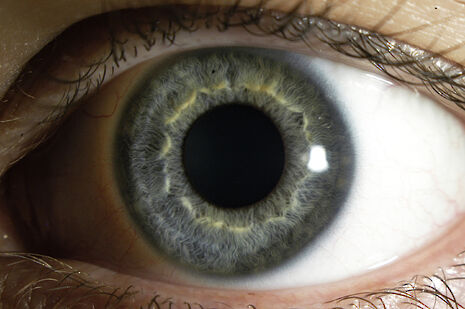Lab-grown corneas: transplants in sight
Andre Lo investigates new innovations in cornea transplants

Scientists at Newcastle University have achieved a breakthrough in growing curved human corneas which could save the sight of individuals worldwide. Their research paper demonstrates how the strength and clarity of artificial corneas can be improved just by growing them on curved surfaces.
The cornea is a transparent protective window at the front surface of the eye and helps focus light as it enters the eye so you can see. Healthy corneas are smooth and clear but can become scarred, distorted, cloudy or damaged from injury, disease, degeneration or infections. This prevents light from reaching the retina and causes sight problems. When this happens, corneal transplants may be required if eyesight cannot be managed by contact lenses and glasses or the cornea cannot heal. In some cases, corneal transplants are used to relieve pain in an injured or diseased eye. One of the most common reasons for requiring a corneal transplant in teenagers and young adults is keratoconus, where the cornea weakens and bulges outward.
“This new technique may revolutionise how artificial tissues are traditionally grown in laboratories around the world”
In a press release, Newcastle University announced that their revolutionary method of growing artificial human corneas “could provide a solution for the shortage of donated human corneal tissues and a practical alternative to the use of artificial plastic corneas which can be rejected by the body”. A corneal transplant involves replacing all or part of a damaged cornea with healthy donor tissue, and corneas can only be harvested from those who recently died. The shortage of corneas has also exacerbated in recent years, as corneas cannot be used if their donors had laser eye surgery. According to NHS Blood and Transplant, from 2016-2017, there were 2791 cornea donors in the UK - down 3.7% from the previous year. In the same year, there were 3613 corneal transplants, down 5.6%.
Newcastle University’s new method of growing corneas takes three months, and produces corneas that are a better fit and quality than previous versions. The research revealed that when corneal cells from human donors are grown on curved surfaces, they show a highly regular nanostructure, where collagen fibrils align themselves radially. It is this precise lattice-like arrangement that makes the human cornea strong and transparent. According to Newcastle University, “This new technique may revolutionise how artificial tissues are traditionally grown in laboratories around the world.”
The project’s lead researcher and Professor of Tissue Engineering at Newcastle University's Institute of Genetic Medicine, Dr Che Connon, explained further: “We discovered that the cells grown on a dome-shaped surface behaved differently than those on flat one, crawling over the dome in a lattice-like structure – similar to a lattice pie crust.”
“These cells then produced large amounts of aligned collagen, the natural fibres that make up the human cornea. This is also the arrangement normally found in the human eye, and there were no easy ways to recreate it in a dish…until now!” Their results demonstrate that this alignment produces clearer and more transparent retinas. “This has never been seen before and has an important impact on how we think and develop new artificial tissues for human transplantation.”
For now, cornea replacement relies on transplantation. Currently corneas are in severe demand and will continue to be so without more sign ups to the Donor Register. Yet the promise of artificial corneas may greatly increase the number human corneal transplants available in the future
 News / Clare Hall spent over £500k opposing busway 24 December 2025
News / Clare Hall spent over £500k opposing busway 24 December 2025 News / Caius mourns its tree-mendous loss23 December 2025
News / Caius mourns its tree-mendous loss23 December 2025 Comment / The ‘class’ of Cambridge24 December 2025
Comment / The ‘class’ of Cambridge24 December 2025 Comment / Yes, I’m brown – but I have more important things to say22 December 2025
Comment / Yes, I’m brown – but I have more important things to say22 December 2025 Interviews / Politics, your own way: Tilly Middlehurst on speaking out21 December 2025
Interviews / Politics, your own way: Tilly Middlehurst on speaking out21 December 2025








